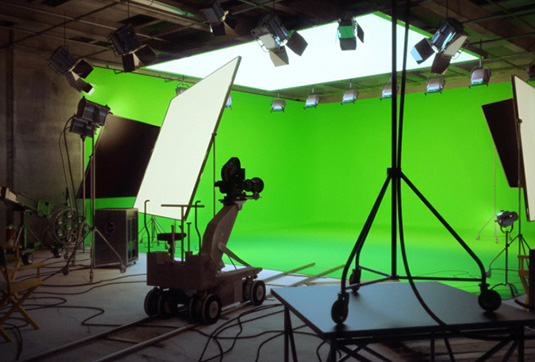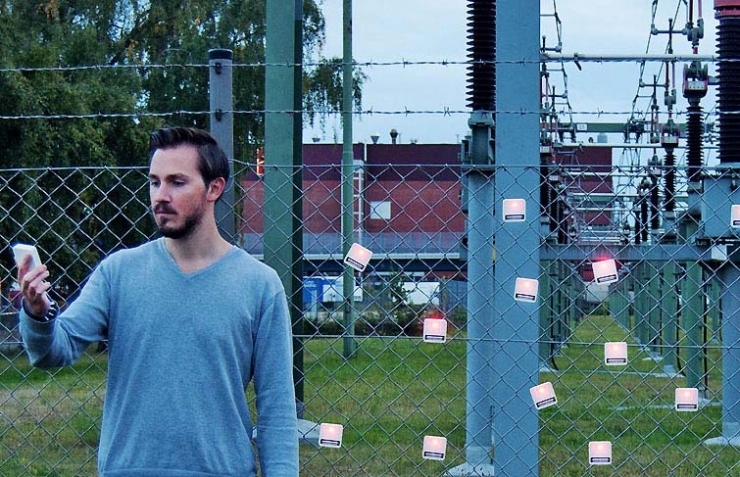Tuesday, February 26. 2013
By fabric | ch via Bracket
-----
A few events linked to the book launch of Bracket - [goes soft] that we missed to annouce on | rblg. After New-York at the Columbia's Studio-X NYC and Houston last February, the book will be launched in Toronto on the 1st of March.
Among several interesting projects curated by Benjamin Bratton, Julia Czerniak, Jeffrey Inaba, Geoff Manaugh, Philippe Rahm, Charles Renfro sits Arctic Opening, a project by fabric | ch that we realized back in 2010 on the Frioul Archipelago (Marseilles), in France.
The co-editors are Lola Sheppard and Neeraj Bhatia. The book is published by Actar and designed by Thumb.
Enjoy the reading!

Friday, February 22. 2013
-----
de noreply@blogger.com (Geoff Manaugh)

[Image: Green screen; image via Geek Magazine].
Earlier this week, Petro Vlahos, described by the BBC as "the pioneer of blue- and green-screen systems" in cinema, passed away. Vlahos's highly specific recoloring of certain surfaces in the everyday built environment allowed "filmmakers to superimpose actors and other objects against separately filmed backgrounds"; they are walls that aren't really there:
He called his invention the colour-difference travelling matte scheme. Like pre-existing blue-screen techniques it involves filming a scene against an aquamarine blue-coloured background. This is used to generate a matte—which is transparent wherever the blue-colour features on the original film, and opaque elsewhere. This can then be used to superimpose a separately filmed scene or visual effects to create a composite.
Special effects, animated actors, entire sets and spaces that weren't physically present during filming: these aquamarine-colored surfaces are almost conjuring windows through which other environments can be optically inserted into filmed representations of the present moment.
These sorts of walls and surfaces are not architecture, we might say, but pure spatial effects, a kind of representational sleight of hand through which the boundaries and contents of a location can be infinitely expanded. There is no "building," then, to put this in Matrix-speak; there are only spatial implications. Green screen architecture, here, would simply be a visual space-holder through which to substitute other environments entirely: a kind of permanent, physically real special effect that, in the end, is just a coat of paint.
It's interesting, in this interpretation, that "green screens" or a rough optical equivalent are not more commonly utilized in architectural or interior design—even if only as an ironic gesture toward the possibility that, say, a group of friends taking photographs in your living room, with its weird green wall on one side, or in the lobby of that hotel, with its green screen backdrop, might somehow be able to insert into the resulting photographs otherwise non-present spatial realities, as if they had been photographed in front of a Stargate or a Holodeck, a window creaking open between worlds.
In fact, this was exactly the strange feeling I had when living just two buildings away from a green screen lot in Los Angeles, as if the painted green surface there, looming over the empty lot on our street corner, was standing sentinel, patiently awaiting new worlds to appear, all the while being nothing more than a wall of green plywood.
Monday, February 11. 2013
-----
No matter how many times you watch The Matrix, the creepiest part is seeing the whole of humanity hooked up to pods to act as living power generators for their robot masters. Now Germany-based designer Dennis Siegel has created a kind of mini version of this idea that he calls an Electromagnetic Harvester.
The tiny device allows him to draw redundant energy from household appliances, mobile devices, and even outside aerial electrical lines. An LED light indicates when power is effectively being drawn in, and that power is conveniently stored in what appears to be a common AA battery. According to Siegel, it takes the Electromagnetic Harvester about one day to fully charge one of the batteries, depending on the strength of the electromagnetic field being sourced.
You can see video of the Electromagnetic Harvester in action in the video below.
|



